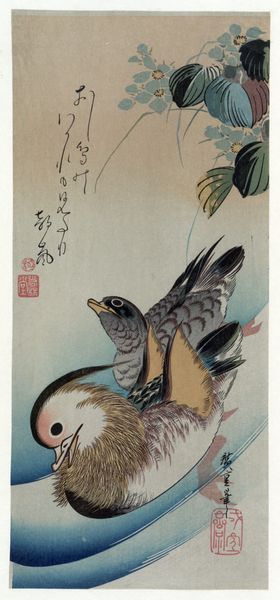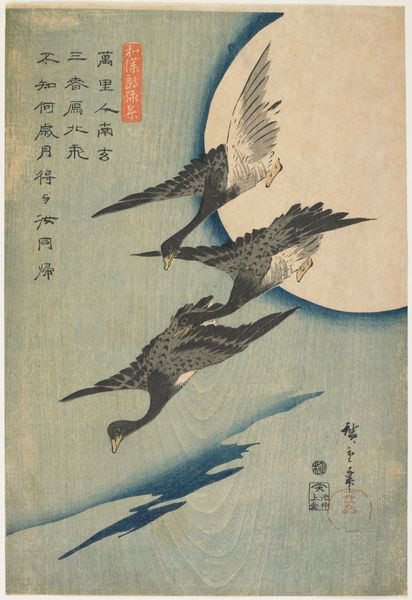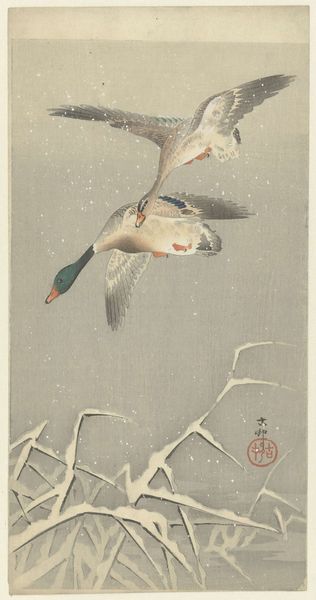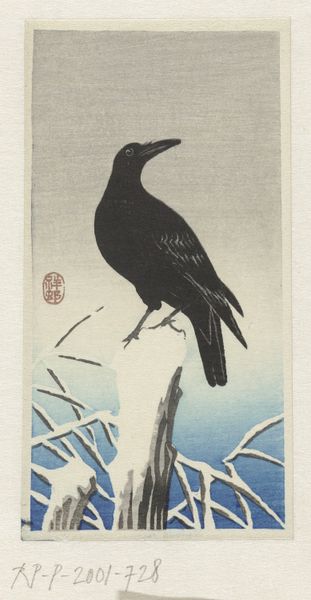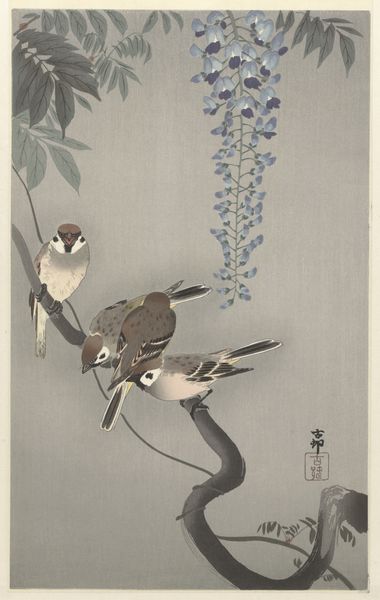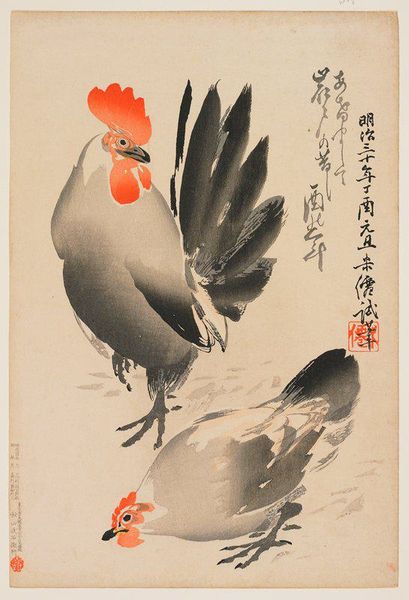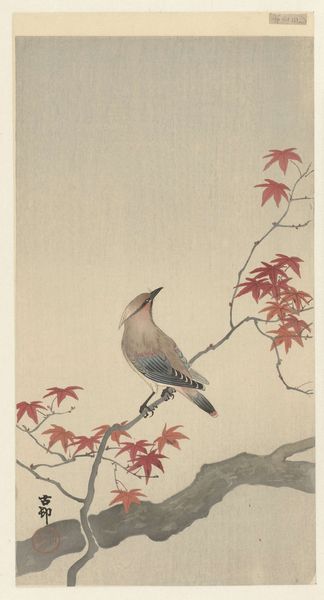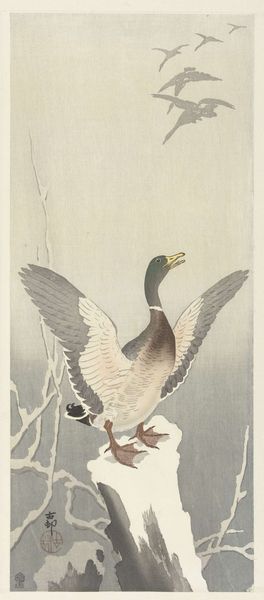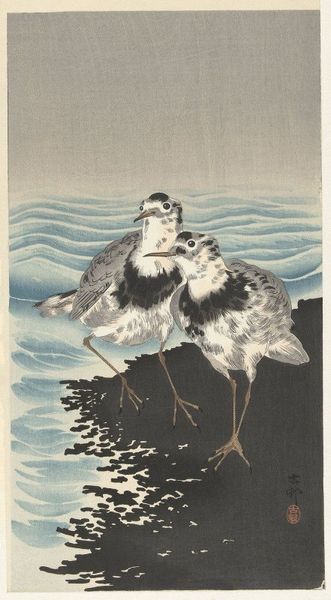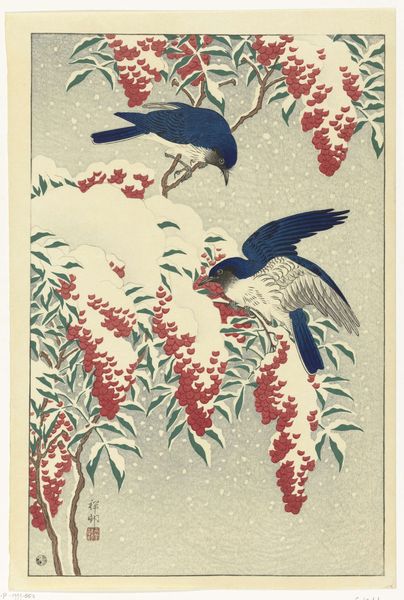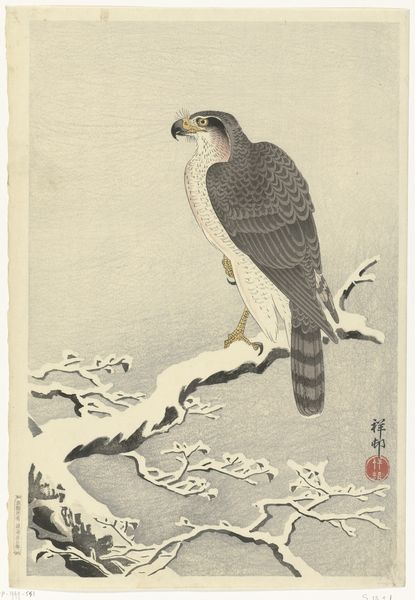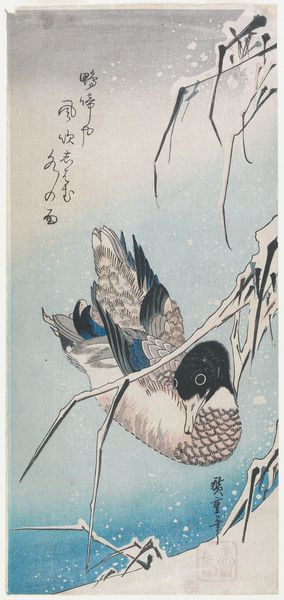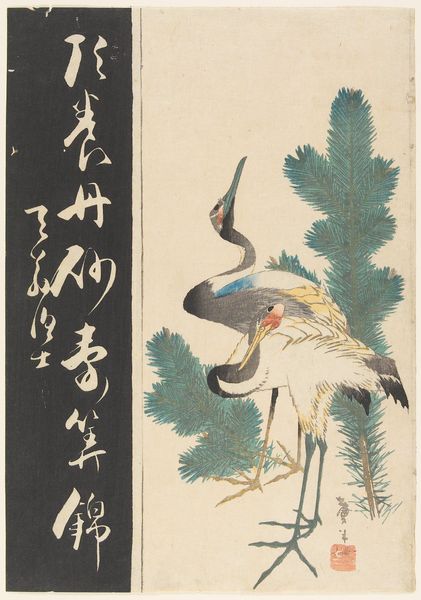
#
childish illustration
#
green and blue tone
#
caricature
#
curved letter used
#
muted green
#
bubble style
#
watercolour illustration
#
green and neutral
#
green and blue
#
watercolor
Dimensions: height 342 mm, width 186 mm
Copyright: Rijks Museum: Open Domain
Editor: So, this is "Drie roodstuitzwaluwen in duikvlucht," which translates to "Three red-rumped swallows diving," by Ohara Koson, sometime between 1900 and 1930. It's at the Rijksmuseum. It feels delicate and almost dreamlike to me. How do you interpret this work? Curator: What strikes me immediately is how Koson, working during a time of significant social and political change in Japan, uses a traditional subject – birds – to perhaps hint at broader themes. The Meiji Restoration saw a shift towards Westernization, but artists like Koson maintained a link to Japanese aesthetics. Editor: In what ways? Curator: Look at the composition: the close cropping, the flattened perspective, and the delicate use of line are all very much in keeping with ukiyo-e traditions. Now consider the swallows themselves. In many cultures, they symbolize home, return, and good fortune. What do you think they might represent here in the context of rapid modernization and Western influence? Editor: Maybe a yearning for a simpler past or a resistance against losing traditional values? Curator: Exactly. And it is also important to consider what voices may have been silenced during the same time period due to social upheaval and Western intervention. The quiet beauty and traditional themes within the work contrast sharply with what was going on during that time. How does that reflection make you think about the art in a new light? Editor: It makes me appreciate how this seemingly simple image might actually be a powerful, subtle statement about cultural identity. Thanks! Curator: It's a reminder that even seemingly conventional art can hold complex narratives and reflect resistance to cultural hegemony. Thanks to you as well!
Comments
No comments
Be the first to comment and join the conversation on the ultimate creative platform.
